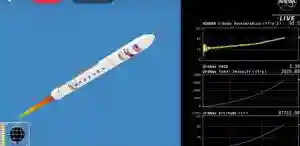Zimbabwe’s first satellite, ZimSat-1, was launched on Monday, 7 November 2022, by the National Aeronautics and Space Administration (NASA).
The launch was initially set for Monday, 06 November, but was postponed to today due to a fire alarm in some parts of the building.
The launch of the NG-18 rocket that carries Zimbabwe’s ZIMSAT-1was aired on NASA Television and the agency’s website, as well as YouTube, Twitter, and NASA’s App.
See the launch of the satellite in the video below:
The launch of Zimbabwe’s first satellite has raised a lot of debate online, with some people arguing that it is a waste of resources that could be put to better use, such as providing critical medicines and cancer machines in hospitals.
In 2015, Japan’s Kyushu Institute of Technology launched what it called the Joint Global Multinational Birds Programme, or the “BIRDS” programme.
The programme is meant to increase knowledge of space technology around the world by training scientists from non-space countries, like Zimbabwe.
Under BIRDS, scientists from the participating countries learn the entire processes of a satellite programme and get support in developing satellites.
Zimbabwe has been able to launch its first satellite after years of work by its four scientists, Victor Mukungunugwa, Kudakwashe Jeje, Ramson Munyaradzi Nyamukondiwa, and Timothy Kuhamba, who worked with Kyushu Institute of Technology under the BIRDS programme. Said Kyushi:
The satellite images taken by multispectral camera made by BIRDS-5 members with a spatial resolution of 100m shall be used to investigate land use and cover such as crop health, soil adjusted vegetation index, cultivated area.
Satellite images of dams and lakes captured by a BIRDS-5 made multispectral camera shall be used as a demonstration of water quality assessment.
The satellite will also help Zimbabwe monitor the weather, forests, crop hectarage, while also being useful in disaster management.
| newZWire

